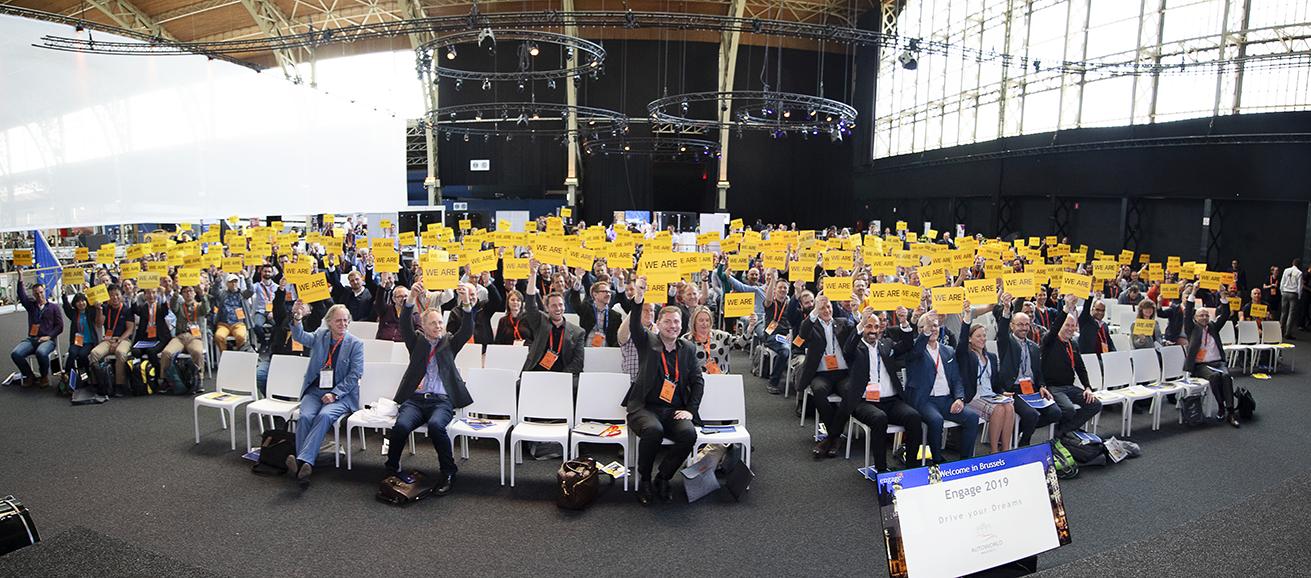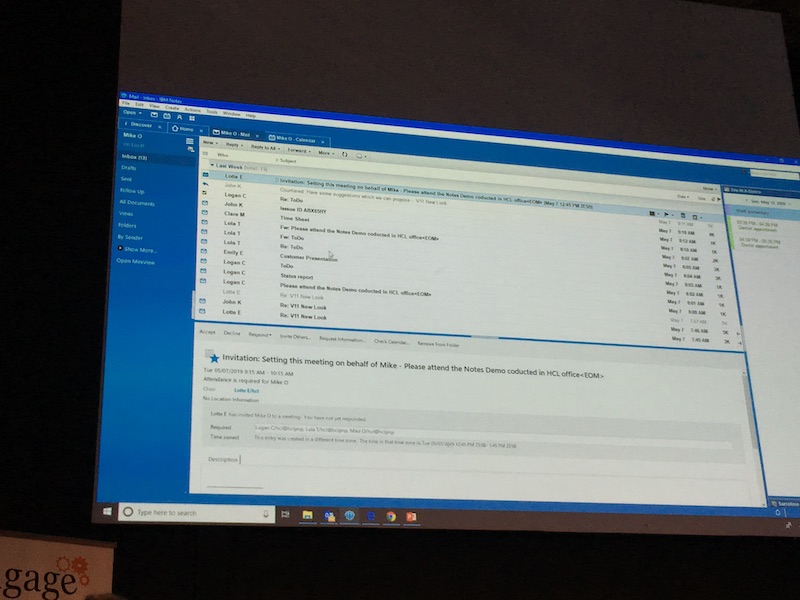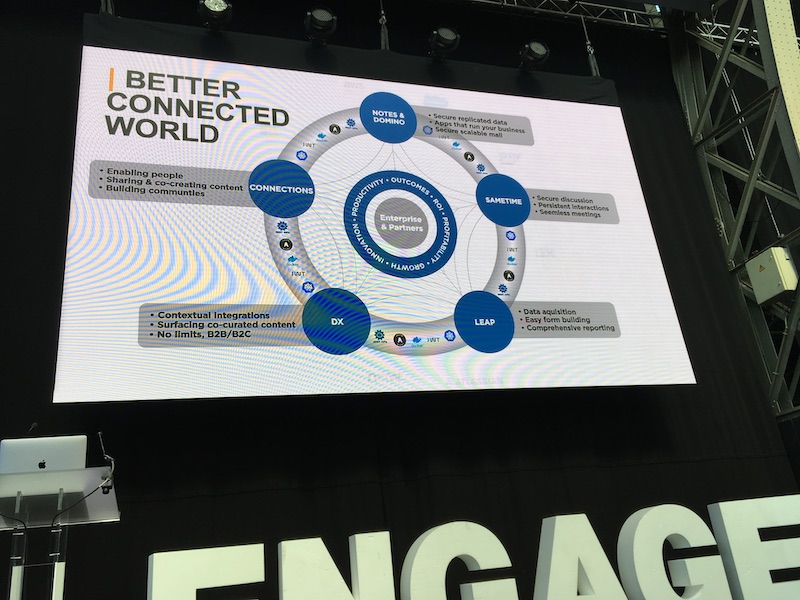engage.ug 2019 – a summary

The conference has been the largest user group conference in the IBM collaboration environment for years and since Lotusphere or Connect conferences of IBM were integrated into the conference series THINK, also by far the most significant.
Theo Heselmans and his wife Hilda once again organized and carried out a wonderful event in Brussels on their own. Thank you! The world’s largest ICS conference attracted over 400 participants from all over the world. Every year Theo manages to organize extraordinary conference venues for the conference. While last year it was a cruise ship, this year Autoworld hosted the conference in Brussels and the more than 400 participants could also enjoy the exhibited vehicles during the breaks. I came across the Vespa (150 ccm), which my father used at the beginning of the 60s.

History was also written at this conference regarding the fact that this was the last engage.ug conference dealing with IBM Collaboration Solutions (ICS). In the future engage.ug will still deal with the same solutions (Domino/Notes, Sametime, Connections), but they will not be anymore IBM solutions by mid 2019. If the sale is actually completed at the beginning of June 2019, these will all be HCL solutions. A major rebranding of the products is imminent.
At the HCL Factory Tour Episode 2 in Milan, HCL presented and explained the plans for the next development steps to a selected group of business partners, customers and IBM Champions. Already in Milan the enthusiasm, euphoria and conviction of HCL to hold a promising portfolio in their hands was noticeable. The same euphoria was shown and exemplified by HCL last week in Brussels during engage.ug and the innovations shown in the closed circle in Milan have now been publicly confirmed. Up to the top management level HCL was present for three days and valuable direct conversations could be held. What I had already noticed in Milan was that six years of missing innovation in IBM’s Collaboration division should not be so easy to catch up with. Too many issues need to be addressed. In Milan all possibilities were left open, now in Brussels the euphoria and belief in the future has remained, but at the same time the realization has matured that not everything can be tackled simultaneously and priorities must be set in order to meet the high expectations. So HCL Places, which to our great surprise was presented as an alternative Collaboration Client a year ago, was consequently dropped.
With Domino 10, HCL already proved last autumn that promises are kept. It would have been more important for me to have innovations in the area of the Notes client. In the first renewal for which HCL was responsible, however, HCL decided for understandable reasons to renew the backend infrastructure, i.e. Domino. This has been successful and with Domino 10 we now have a very stable development platform that also allows extremely modern application development. The conference website can be used as a benchmark for an exclusively Domino-based web application with state-of-the-art design options. So what can we expect in detail?
Connections is not yet officially part of the HCL portfolio. This will be transferred to HCL in June 2019 after the sale has been completed. The announcements were accordingly covered by IBM. While in Connectins 6.0 the integration and the quick access to the calendar and the email had disappeared, Danielle Baptiste has shown that in the latest version this will be available again. This was an obstacle for us to update to the latest version. This has now been removed. Thank you and your team, Danielle! Also further improvements have been shown, which are pleasing. The editor is updated for all areas, the adjustment of connections has been simplified, the notification emails are more appealing and also wikis can be edited by several people at the same time in the future.
It is pleasing to see the great emphasis that HCL places on Sametime, and thus on internal, secure and fast communication. Persistent chats were previously not possible with Sametime. This is already possible with Sametime 10. Sametime 10 also makes it possible to receive chats on all possible devices. So I am no longer logged out on the iPhone when I open a Sametime session with the Notes client. The only suspicion here: in order to make this possible, MongoDB databases have to be pulled up for Sametime 10, with Sametime 11, which will be completely integrated into Notes, Domino databases will be used for this, which of course will be much more efficient and attractive.
While the new Notes 11 client was first shown in Milan in mockups, it was demonstrated live in Brussels. Notes will remain Notes, the functionality is simply too big to revolutionize Notes. Nevertheless, it became clear that Notes will continue to evolve, become more intuitive to use and adapt to common models. What particularly appealed was the much leaner and clearer function for invitations, the new search function and the tidier user interface.

The application of rules to already received e-mails or the forwarding of several e-mails at the same time in .eml format are only secondary issues. As with other topics, Notes was also used for further development. The fact that Domino can be used very well for modern web applications was impressively shown in a demonstration. With the help of Alexa an order in a shop was searched, released and confirmed with voice commands. Or also with voice commands via a Domino App in Connections a private community was opened and the members immediately invited. The code is published on github. In Milan, it was also promised that the client for tablets, which has been available in the test flight for iPads for some time, would be available in the Apple Store. With IBM Mobile Apps, an application is now available for iPads that opens Notes applications on the iPad without having to be adapted. Android and iPhone will follow. The Notes Roundtable was another highlight and the concerns were taken up and heard.
A new light client will also be available for applications. The replacement of IBM iNotes will be Verse on Premises and for which parity to iNotes in the scope of functions is promised and for a replacement of iNotes will also be indispensable. But the user experience and the integration in Connections will be completely new. The profile pictures of the most important contacts will be drawn directly from the Connections profile and the most important interactions with a correspondence partner, including direct access to chat, will be possible directly via the profile picture.
And although it is an HTML5 browser app, it will allow you to work offline. Today we know verses as apps for iOS and Android devices. Verse Mobile will also be offered as a very fluid browser app for mobile devices in the future. Not a trace of the limitations that the mobile View for iNotes still brought with it.
IBM had for years followed the strategy of leaving the choice of client to the users. With the integration of Outlook with the help of IMSO (IBM Mail Support for Microsoft Outlook) this is fullfilled for Windows. Also still no outlook was given for the integration of Apple Mail and Apple iCalendar. It has been confirmed that this is on the roadmap, but unfortunately nothing has been specified yet.
Already at the opening Richard Jetfs showed the vision for the Domino/Notes, Sametime, Connections Ecosystem. The meaning of Notes & Domino as well as (to my surprise and joy) Sametime, which is regarded as an essential part of the “Better Connected World” history of HCL, was explained.

As can be seen from other points on the wheel, the intention is to promote and open integration with other technologies and systems as a priority. With LEAP, there is a point on the wheel that many may not yet be aware of. It is the one solution formerly known as Forms Experience Builder, which is central to the low-code development initiative of HCLs.
With the collaboration solutions, HCL concentrates on “on premises”, which is a departure from the “Cloud First” strategy that IBM still pursued with the same products. Thus, it is currently almost the only alternative to the two duopoles Microsoft and Google. For institutions that don’t want to or can’t outsource everything to the cloud, a valid and promising alternative.